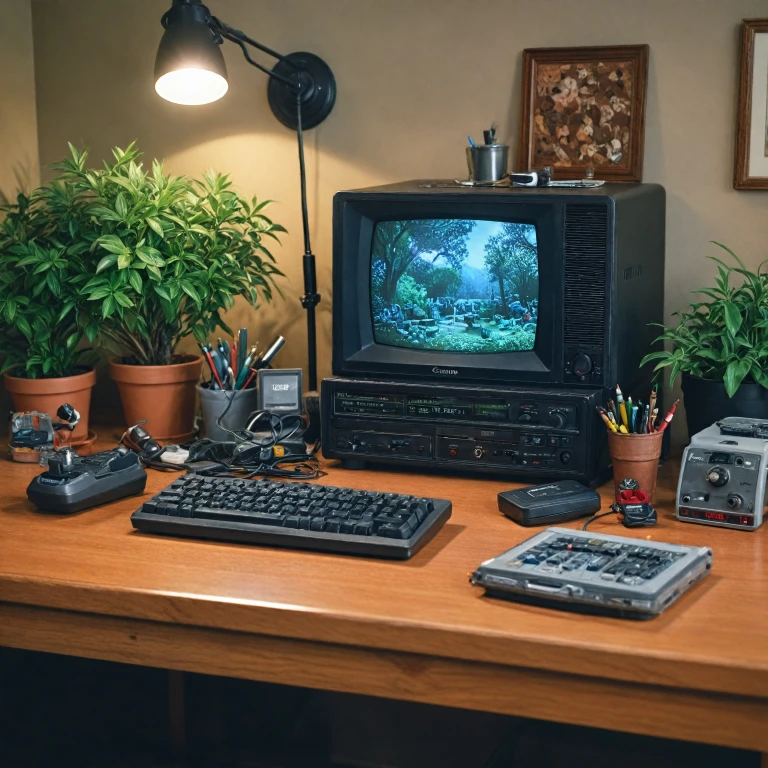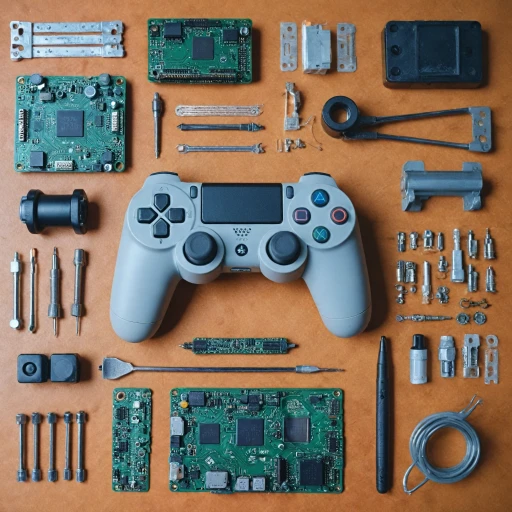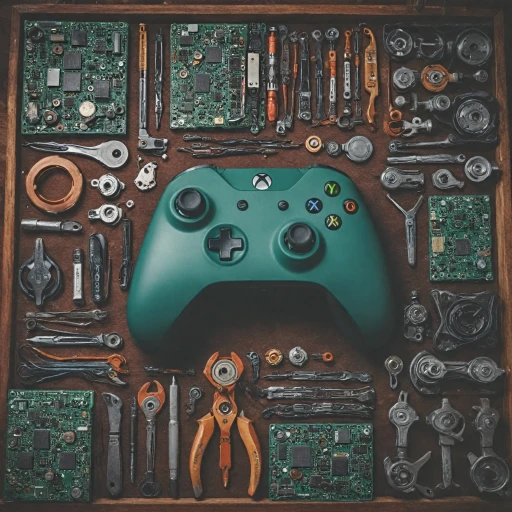
Understanding the Anbernic Console
Introduction to Anbernic Consoles
Anbernic consoles have captured the attention of retro gaming enthusiasts with their portability and support for a myriad of classic games. These devices offer an extensive array of systems and titles from Nintendo to Neo Geo. However, as user-friendly as they may be, it's not uncommon for users to encounter issues, such as those with the gpsp emulator, which can hinder the gaming experience. Understanding how these consoles function is important to effectively troubleshoot.
The Anatomy of an Anbernic Console
This handheld device runs on software like RetroArch to support various emulations for systems including Game Boy, Atari, and others. The console's operating system relies on a combination of software files such as BIOS, ROMs, and emulation cores. These are typically stored on a microSD card in an organized manner.
The BIOS files are crucial for emulating the correct system environment for games, while ROM files act as the digital counterpart to a physical game cartridge. Without properly configured or placed files within their respective folders, you might face issues running certain games. Part of troubleshooting involves verifying these files are named correctly and are in the right folder internal to the console's system.
Why Understanding Your Console Matters
Knowing the ins and outs of your Anbernic device will empower you to manage these files effectively. It will also prepare you for troubleshooting should you experience issues with your gpsp not appearing or working as expected. Familiarizing yourself with file management, such as zipping and unzipping files and understanding the core functions, is essential.
For those eager to dive deeper into enhancing their hardware management skills, exploring comprehensive repair guides can also be beneficial. Being equipped with this knowledge ensures that your gaming is smooth and enjoyable, with fewer hitches.
What is gpsp?
Decoding gpsp: The Game Boy Advance Emulator
For enthusiasts of retro gaming, especially those with fond memories of the Nintendo Game Boy, gpsp is a familiar term. This emulator allows modern devices, including Anbernic consoles, to run Game Boy games. Delving into the technical aspects, gpsp operates like a bridge, translating the original game files or roms into a playable format. This means you can enjoy your favorite classic games on contemporary hardware.
When working with gpsp on your Anbernic console, a few crucial components enhance functionality:
- Bios Files: The bios bin is a critical part of the emulator, acting as the initial boot program that manages the system's basic functions. Ensuring the correct bios bin is placed in the bios folder is essential for gpsp to function properly.
- Rom Files: Game files or roms, usually in .zip or .cue formats, hold the data for each game. These need to be located in the correct rom folder within your console's file structure.
- File Organization: Placing relevant files in their respective folders, such as the bios files in the bios folder and rom files in the rom folder, ensures the emulator accesses them efficiently.
Incorporating gpsp into your gaming library expands possibilities but can come with technical challenges as discussed further in this guide. For those encountering any issues with gpsp not appearing, subsequent sections will delve into troubleshooting steps and alternative solutions. If your Anbernic needs an overhaul, check out these essential repair tips.
Common Reasons for gpsp Not Appearing
Reasons for gpsp Not Appearing on Anbernic Consoles
Navigating the world of gaming emulators can sometimes be a daunting task, especially when certain tools like gpsp don't show up on your Anbernic console. This issue can stem from multiple sources, ranging from missing files to incorrect configurations. First and foremost, the absence of gpsp often relates to bios files not being properly installed. The emulator requires a specific bios bin file to function correctly. Without this, gpsp may not even appear in the emulator core selection process within the Retroarch interface. To resolve this, ensure that a correct bios bin is placed in the designated bios folder on your internal storage or microsd card. Another common hurdle is the organization of your game files. For gpsp to recognize your game library, the rom files need to be correctly placed in the rom folder that the emulator is configured to search. Similarly, ensure that all supporting files, such as cue and zip files, are in the correct directory and are not corrupted. Incorrect installation paths can also lead to issues with gpsp visibility. Verify that the emulator files and bios files are located in the appropriate directory following the console's documentation. This might involve placing files in a specific folder internal to the system or adjusting paths through the system menu. Lastly, the issue might be as simple as a misstep in the emulator setup. Starting from the beginning and ensuring you follow all setup instructions can rectify many common mistakes. This includes reviewing the table contents for guidance on where each file named should reside. For those still encountering challenges, considering or trying alternative emulators might be beneficial, especially if the problem persists despite correct file placement. For a deeper dive into troubleshooting your Anbernic console's issues, feel free to visit this detailed guide for professional insights and solutions.Step-by-Step Troubleshooting Guide
Detailed Troubleshooting Process
The Anbernic console, like any sophisticated piece of gaming hardware, might face specific issues when it comes to running the gpsp emulator. If gpsp has been installed but is not appearing or functioning correctly, following a structured troubleshooting guide can often resolve these issues.- Verify BIOS Files: Determine if the gpsp emulator requires specific BIOS files to run. For the Game Boy Advance emulator, a file named
gba_bios.binis typically necessary. Ensure this file is placed in the correct bios folder within the emulator's directory on your microSD card. - Check Emulator Installation: Confirm that the gpsp emulator and its necessary files have been correctly installed. Look for the gpsp file within your emulator's directory. If files are missing, try reinstalling gpsp.
- Inspect Game Files: Ensure that your game files, commonly called ROMs, are correctly placed in the designated rom folder. Check that these ROMs are in the right format—typically .gba or .zip files. Incorrect file formats can prevent proper loading.
- Folder Structure: Double-check your folder structure. The gpsp emulator needs a specific hierarchy of folders. Folders should be correctly labeled, as incorrect labeling like naming a folder 'Game_Files' instead of 'ROMs' can lead to issues.
- Configuring the Emulator: Upon launching the gpsp emulator, access the settings menu by pressing the designated button. Make sure the core and system settings are properly configured. Incorrect settings could lead to the games not appearing or not run as expected.
- Update Your Emulator: Regular updates to the emulator can improve compatibility. If gpsp is outdated, updating it might resolve any existing bugs.
Alternative Emulators and Solutions
Exploring Alternative Emulators and Solutions
When encountering issues with gpsp on your Anbernic console, looking into other emulator options might be a practical step.- Retroarch: Many users favor Retroarch due to its versatility. It accommodates a wide range of cores for different retro systems, including Game Boy and Nintendo emulations. Ensure your system's bios files are correctly placed within the bios folder to avoid compatibility issues.
- Atari Emulator: If an Atari emulator suits your gaming preference, verify that all necessary files and folders, such as the bin bios and rom files, are appropriately situated in the internal folder structure.
Community Resources and Support
Get Support and Resources from the Anbernic Community
Navigating the intricacies of gpsp issues can be daunting, especially when you're trying to get your favorite games running smoothly on your Anbernic console. Luckily, the community is an invaluable resource for troubleshooting and support. Here's how you can tap into the collective knowledge and experience:- Engage in Online Forums: There are numerous forums dedicated to retro gaming and Anbernic consoles. Communities such as RetroPie and GBAtemp offer insights into configuration issues like misplacement of the bin BIOS files, incorrect folder internal setups, or problematic game files.
- Utilize Social Media and Reddit: Platforms like Facebook groups and Reddit communities can provide quick solutions and recommendations for issues relating to emulators like gpsp. The shared experiences can help resolve common problems like rom files not being recognized or bios files needing updates.
- Follow YouTube Channels and Tutorials: Many enthusiasts share video tutorials that guide you step-by-step through processes such as setting up your bios bin, configuring the retroarch core, or fixing game file errors. These videos can be helpful for visual learners who want to know where to correctly place folder contents or how to press select at the right moments to access the system menu.
- Consult the Manufacturer and Retailer Support: Sometimes, it's best to go straight to the source. Whether your problem is related to a corrupted microsd card or a faulty bin BIOS file, reaching out to Anbernic's official support or your retailer can provide official solutions and product-specific assistance.












